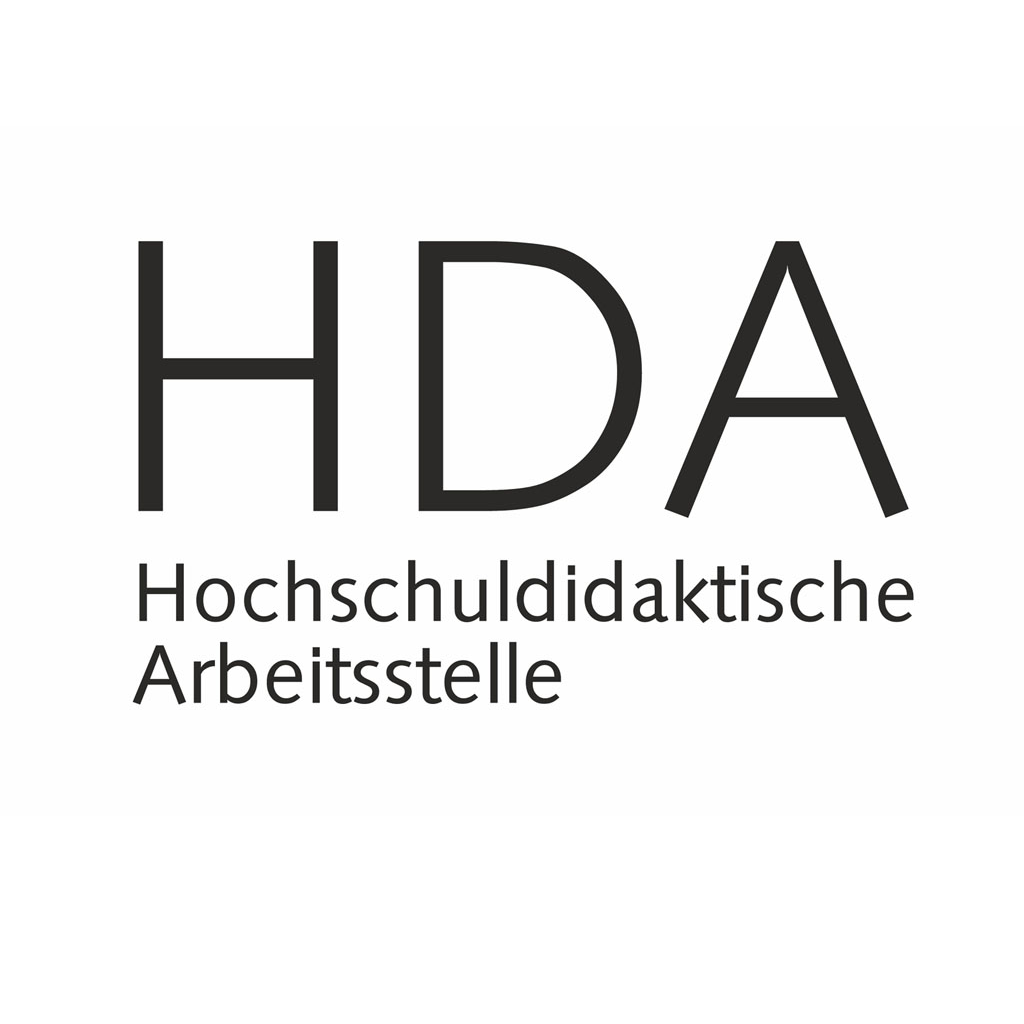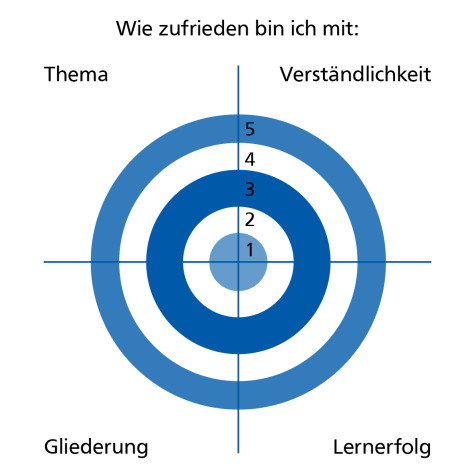Alternative evaluation instruments can be used in a variety of ways in teaching. Whether classical, with paper and pencil, or orally; they can also be used if the course is too small for a standardized course evaluation.
Whether it is a survey of the students' prior knowledge or interim feedback, these methods are particularly helpful as formative evaluation instruments that focus on a specific subject.
Aim:
Quick and targeted feedback, e.g. on the current state of knowledge, student expectations, individual aspects of a course, etc.
Description of the method:
The teacher writes 1-2 questions on a flipchart, on the board, or in a moodle course.
The participants of the course are asked to give a short written feedback (about 1 minute). This should be done anonymously so that the participants can express themselves openly.
An evaluation is done by the instructor, who evaluates the answers and can clarify open questions or respond to the feedback in the next session.
Example of questions:
- What remained unclear for you today?
- What was the most important thing you learned today?
- What method particularly helps you to learn?
- Make max. 2 suggestions which means would help you to improve your learning.
Aim:
Short uncommented feedback, quick opinion, collecting problem statements, questions or feedback on learning success, learning atmosphere etc..
Description of the method:
The instructor asks a question about the current session after a section of the course.
The students answer briefly in 1 to 2 sentences. They talk exclusively about their own view of the question and give personal feedback on ideas, expectations, topics. This personal feedback should be given in “I” form.
The statements are not commented on or classified.
A discussion in the whole group about the collected information, for example named problems and possible changes can follow. However, this should only take place once everyone has expressed their opinion.
Variants:
Initial flashlight: What expectations do participants have for the new topic/current session.
Important: Teachers should respond to results of the flash and react: which expectations can be met, which cannot.
Intermediate flashlight: Are there elements / behaviors in the classroom that are perceived as disruptive to the learning process?
Here, factors that have an unfavorable influence on teaching can be uncovered in order to subsequently ensure a better learning situation.
Final flashlight: Have the expectations of the participants formulated at the beginning been fulfilled? How do the participants evaluate the learning process? Teachers can incorporate feedback into future teaching and participants experience themselves as co-creators.
Aim:
Short feedback on different dimensions of a course. Visual evaluation method.
Description of the method:
A target is prepared with a question. This can contain any number of dimensions (see example image).
The participants receive sticky dots and can now give their assessment. The closer a dot is to the center of the target, the more positive is the assessment of the questioned dimension.
No evaluation, comments, etc. are made while the dots are being affixed. The teacher draws conclusions from the feedback only afterwards and, if necessary, works out changes to the teaching concept.
Aim:
Provide quick and specific feedback on current knowledge, student expectations, individual aspects of a course, etc.
Description of the method:
The teacher writes a question on a piece of paper – or hands out several pieces of paper, each with a question.
The students write their answers / ideas / opinions in bullet points underneath and pass the paper on to the other participants for completion.
In this way, several “Kettenbriefe” on different questions can be circulated. Depending on how much time is allotted for the feedback round, all participants can respond to only some or all of the questions.
Advantages:
This method is similar to the flashlight method. However, opinions can be obtained here from students who do not like to speak publicly.
Example of questions:
- Central aspects of the topic
- What I have learned today was…
- The learning atmosphere today was ….
- Which learning materials do you find particularly helpful for your learning progress?
Aim:
In the teaching and learning process, students are experts in their learning and teachers are experts in subject-specific teaching. The design of the teaching process provides important guidelines for the design of the learning process.
Accordingly, feedback is sought from students on their learning in the Midterm Assessment Process (MAP). It evaluates the effectiveness of the teaching strategy. The learners' experience can then be used to adjust one's own teaching. It also further supports or increases students' motivation to learn.
Description of the method:
Midterm Assessment pursues formative feedback. It looks ahead to opportunities for adjustment in subsequent course lessons. With the help of the MAP, you receive student feedback on how your course is currently “going”.
Midterm assessments are used to derive action-specific needs for change in a concrete teaching situation. The teaching situation is adapted by the teachers in the following sessions. Ideally, a MAP is carried out at an early stage (from the 4th week of the course).
Implementation:
Discussion groups are formed to conduct a midterm assessment. These groups are given the task of discussing and answering key questions. Positive and negative aspects or suggestions for improvement are noted on colored moderation cards. Consensus opinions are printed in bold.
Individual opinions are also documented, e.g. in italics. The results are reviewed by those conducting the midterm assessment and clustered according to themes.
Each group presents its group results on a metaplan wall.
Extension:
If the MAP is to be conducted with the support of an HDA moderation (e.g. in the case of large groups), a concrete work assignment for the moderation is to be formulated in advance. From these, guiding questions for conducting a MAP are developed.
Guiding questions may relate, for example, to the structure of the course, the ratio of guided learning and self-study, the ratio of the workload estimated for the course and the actual workload of the students, the assessment criteria for exams, etc.
Digital Tools
In addition to the traditional assessment alternatives presented, there are a number of digital evaluation tools that are suitable for online and classroom teaching. These tools can be used in a variety of ways, for example, to query prior knowledge or to activate students when an opinion or fact check is to be created jointly. The results are immediately available and can then be discussed in the course.
The E-Learning Unit has compiled some common live voting systems.




